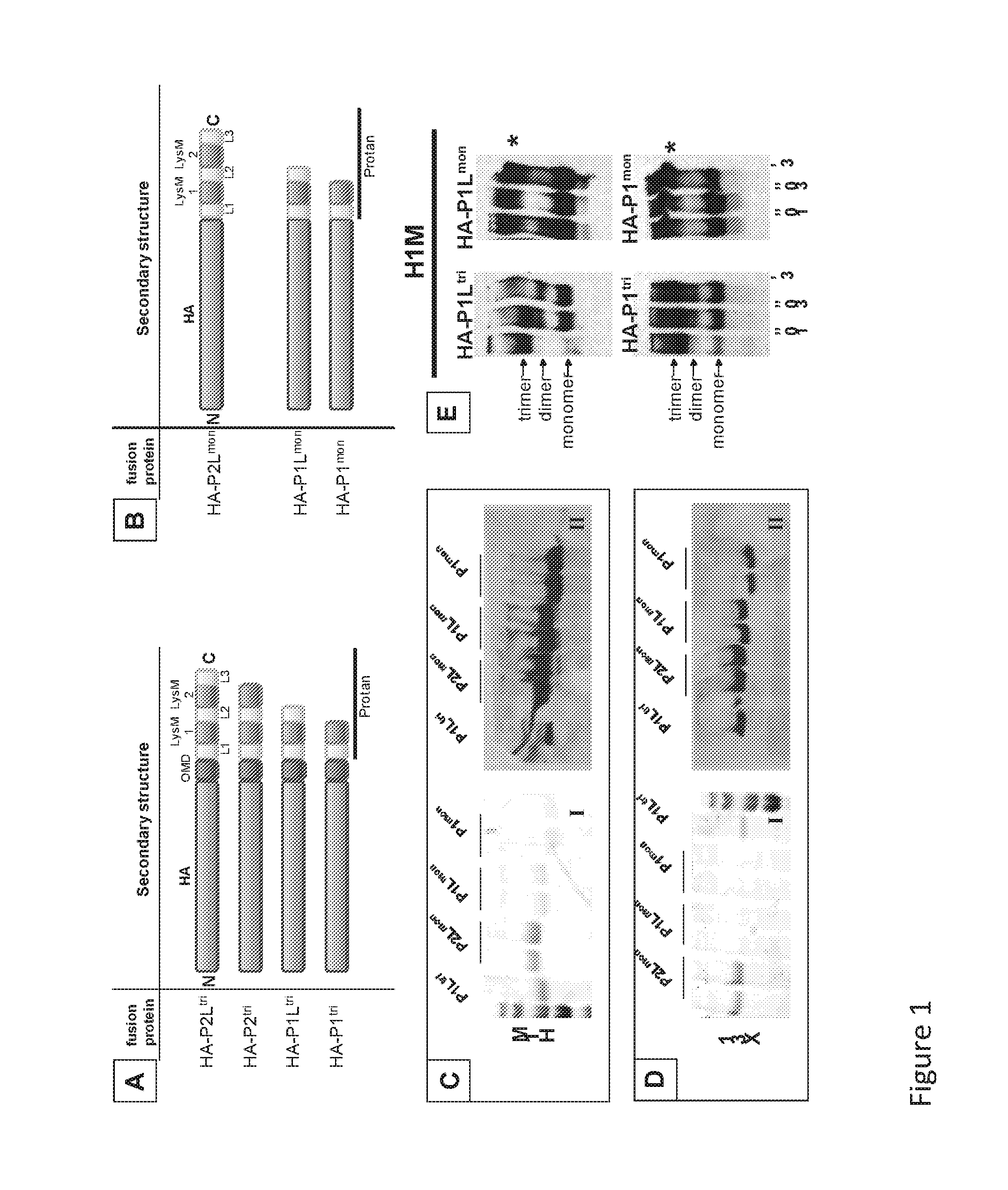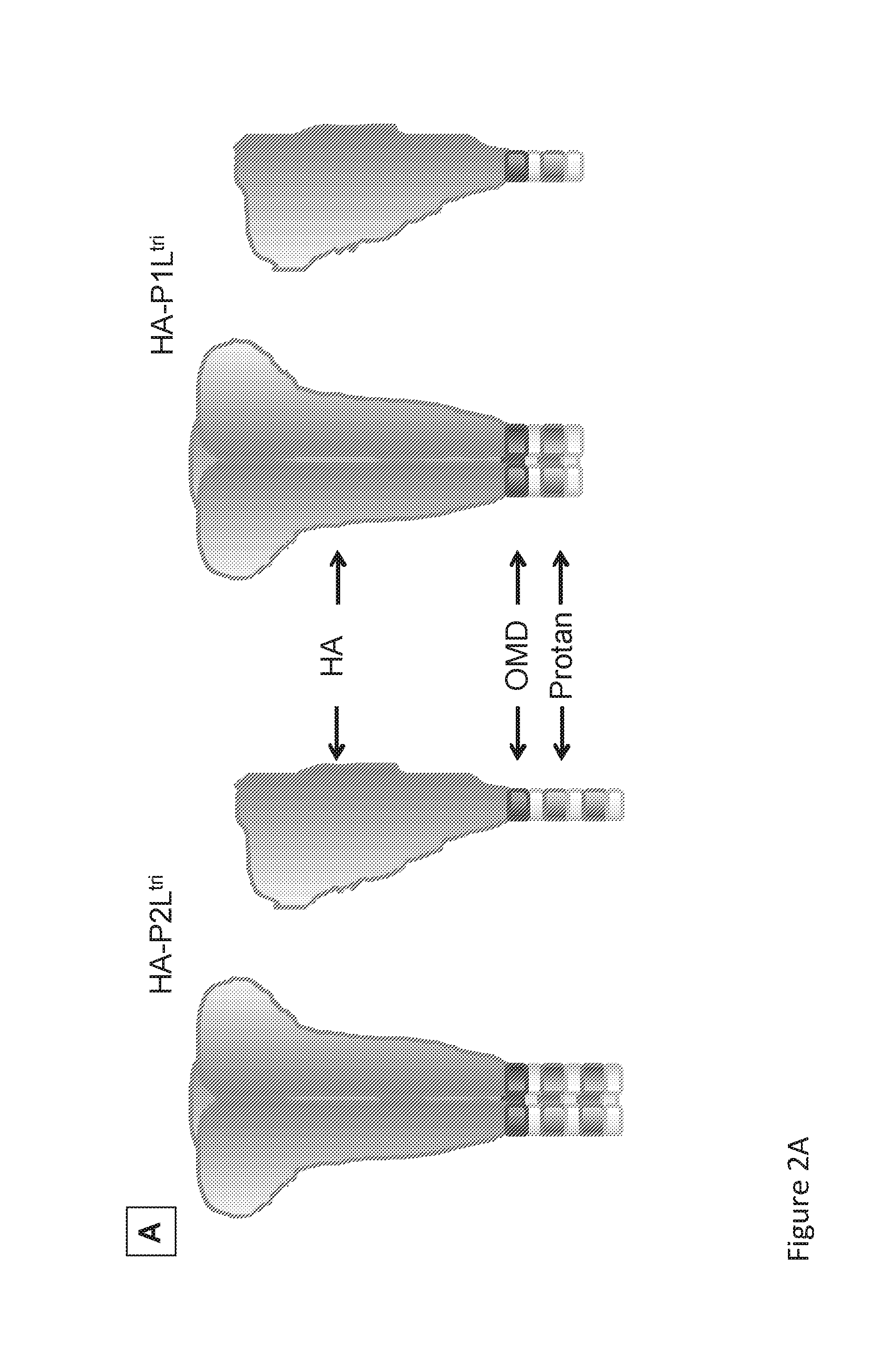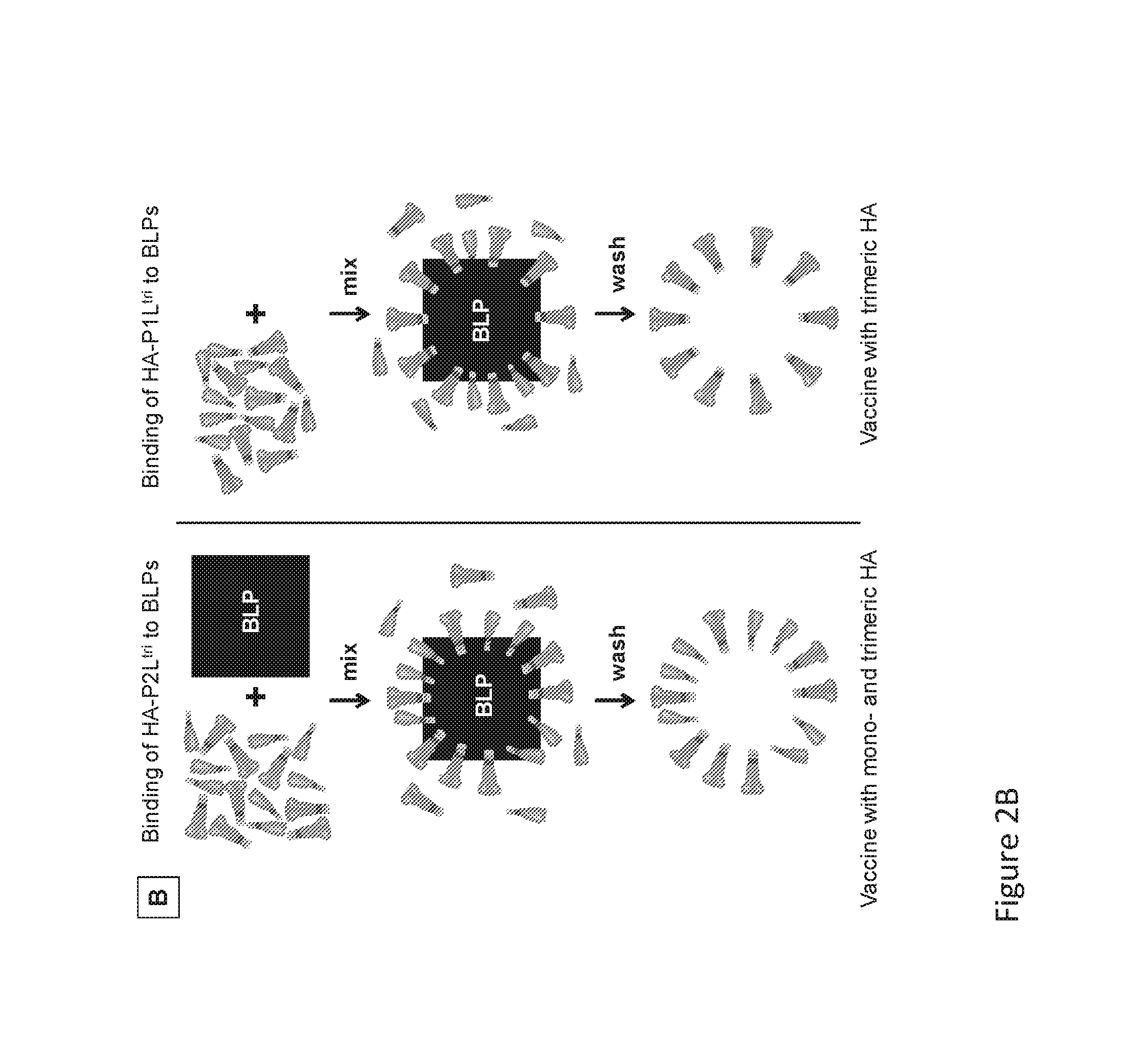Immunogenic compositions in particulate form and methods for producing the same
- Summary
- Abstract
- Description
- Claims
- Application Information
AI Technical Summary
Benefits of technology
Problems solved by technology
Method used
Image
Examples
example 1
Expression of the HA-Protan, F-Protan and Protan-NA Fusion Proteins
[0105]In order to express soluble HA-Protan, F-Protan and Protan-NA chimeric proteins in mammalian cells, the ectodomain-coding sequences were first cloned into appropriate expression vectors. In the pCD5 vector expressing the HA-Protan fusion proteins, the HA-ectodomain sequence was preceded by a signal peptide-encoding sequence, to allow efficient secretion of the recombinant protein, and followed by a sequence encoding one of four Protan domain variants and an artificial GCN4 trimerizaton motif (GCN4-pII; OMD) between the HA and Protan domain variants (FIG. 1A). For the three HA-Protan fusion protein variants that were most efficiently expressed and secreted (see below) we also constructed and expressed fusion proteins that lacked the GCN4 trimerization sequence (OMD; FIG. 1B).
[0106]In the pCD5 vector expressing the Protan-NA chimeric proteins, the NA-head domain sequence was preceded by a signal peptide-encoding ...
example 2
Binding of HA-GCN-Protan, F-GCN-Protan and Protan-GCN-NA Fusion Proteins to BLPs
[0110]The binding characteristics of the various HA-Protan, F-Protan and Protan-NA fusion proteins to BLPs were determined by comparing binding to BLPs in the presence of excess amounts of the various Protan fusion proteins. The SDS-PAGE and Western blotting analyses demonstrated that all HA-Ptri variants bound. The GCN4 domain strongly enhances the binding properties of single LysM domain (1L) constructs. This was demonstrated in an experiment with several HA-P constructs that were bound to BLPs. FIGS. 1C and D show three HA-Protan variants lacking the OMD GCN4 that were tested in duplicate: Protan variant P2Lmon, Protan variant P1Lmon and Protan variant P1mon in comparison to the GCN4-containing HA-Protan fusion protein with Protan variant P1Ltri. The results of the Coomassie staining (panels I) consistently demonstrate poor (H1M) or hardly any (X31) binding when the extension contained just one LysM d...
example 3
Functionality of the HA-GCN-Protan and Protan-GCN-NA Fusion Proteins
Oligomeric State of the Fusion Proteins
[0118]The oligomeric state of the HA-Protan and Protan-NA proteins with or without an artificial OMD, the trimeric of tetrameric GCN4 multimerization motif, respectively, was analyzed by blue-native gel electrophoresis. Samples of HA-Protan fusion proteins that had been shown to bind to BLPs, i.e. the H1M virus derived HA-P1tri and HA-P1Ltri proteins were boiled for 10 seconds, 30 seconds or 3 minutes in order to dissociate HA trimers. All the HA-Ptri proteins migrated in the gel with a mobility according to that of a trimer when heated briefly (boiling for 10 sec) and these HA-trimers dissociated into dimeric and monomeric forms of HA after prolonged sample boiling (FIG. 1E, left panels). HA-P1tri and HA-P1Ltri trimers remained detectable even after prolonged boiling of the samples. In contrast, all the equivalent HA-Pmon variants migrated with the mobility of a monomer. In ad...
PUM
| Property | Measurement | Unit |
|---|---|---|
| Fraction | aaaaa | aaaaa |
| Composition | aaaaa | aaaaa |
| Pharmaceutically acceptable | aaaaa | aaaaa |
Abstract
Description
Claims
Application Information
 Login to View More
Login to View More - R&D
- Intellectual Property
- Life Sciences
- Materials
- Tech Scout
- Unparalleled Data Quality
- Higher Quality Content
- 60% Fewer Hallucinations
Browse by: Latest US Patents, China's latest patents, Technical Efficacy Thesaurus, Application Domain, Technology Topic, Popular Technical Reports.
© 2025 PatSnap. All rights reserved.Legal|Privacy policy|Modern Slavery Act Transparency Statement|Sitemap|About US| Contact US: help@patsnap.com



